Until now, the Canon R10 was the entry-level model in the EOS R system. Now, we have the R50, which is even more entry level: smaller, more touch screen oriented and cheaper to buy.
In this article, I’ll guide you through the ten main differences to understand which one is worth to get if you’re just starting out, or if you want something compact to bring around with you.
Before we start, the list below shows you what the two cameras have in common, and it’s quite a lot:
- 24.2MP sensor and Digic X processor
- 100 to 32,000 ISO, (51,200 ISO with the extended range)
- Dual Pixel CMOS Auto Focus II with subject tracking (people, animals and vehicles), and -4EV sensitivity in low light (f/1.2)
- Focus Bracketing / Stacking
- 0.39-in EVF with 2.36M dots, 0.59x magnification and 120Hz
- Multi-function shoe with Digital Audio
- 3.5mm mic input
- Wifi / Bluetooth
- No in-body image stabilisation (optical / electronic only)

Ethics statement: the following is based on official specs and our general experience with Canon EOS Cameras. We were not asked to write anything about this product, nor were we provided any compensation of any kind. Within the article, there are affiliate links. If you buy something after clicking one of these links, we will receive a small commission. To know more about our ethics, you can visit our full disclosure page. Thank you!
1. Design
The R50 is smaller and lighter, but one area that gets a bit sacrificed as a result is the front grip. If you have large hands, you’ll find the R10 more comfortable to hold thanks its larger and deepr grip.
- R50: 116.3 x 85.5 x 68.8mm, 375g
- R10: 122.5 x 87.8 x 83.4mm, 429g
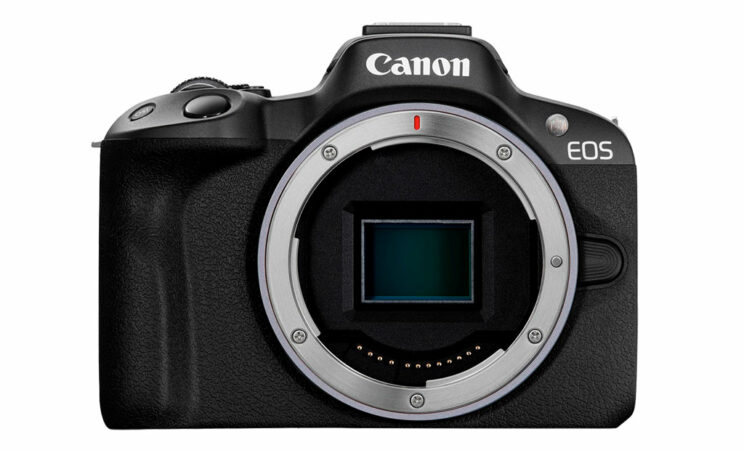
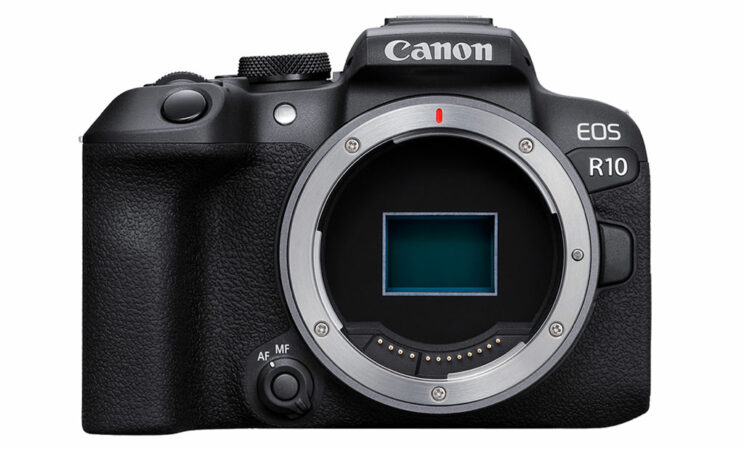
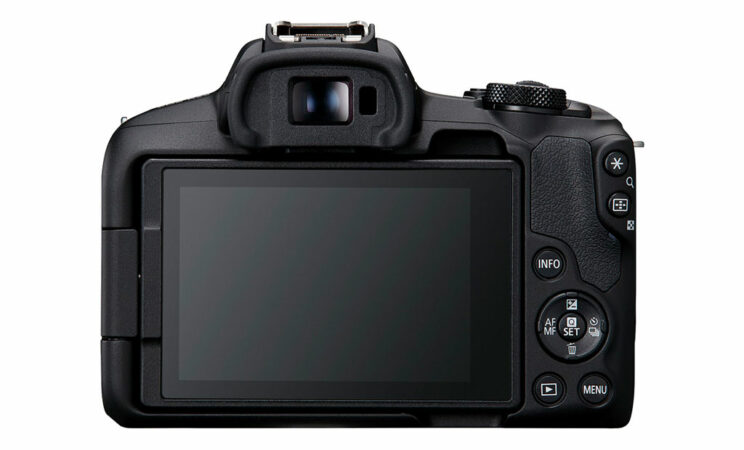
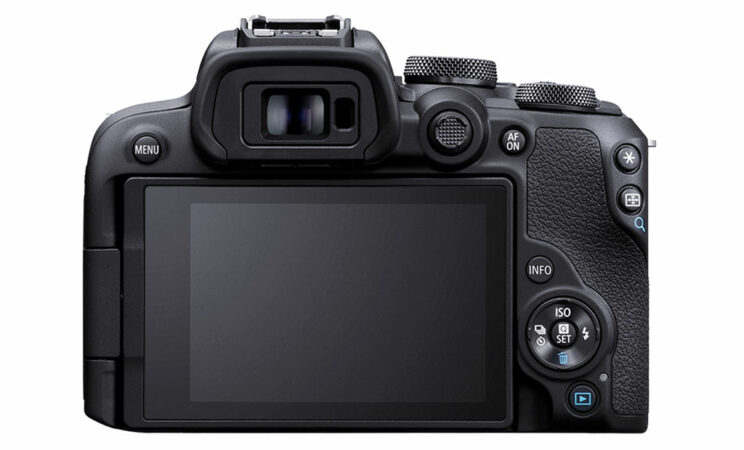
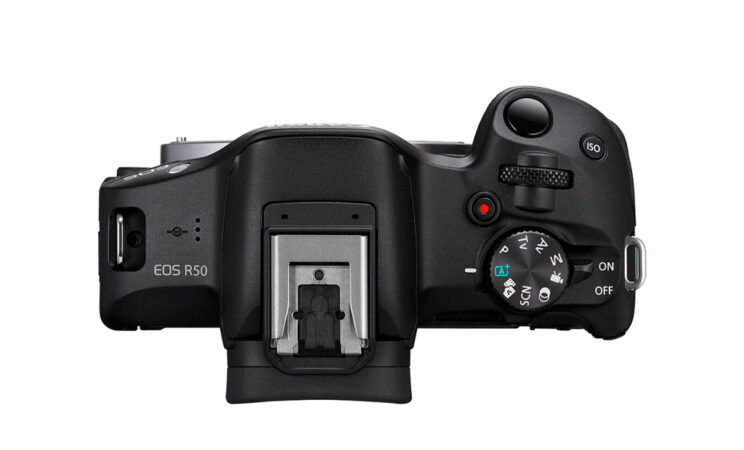
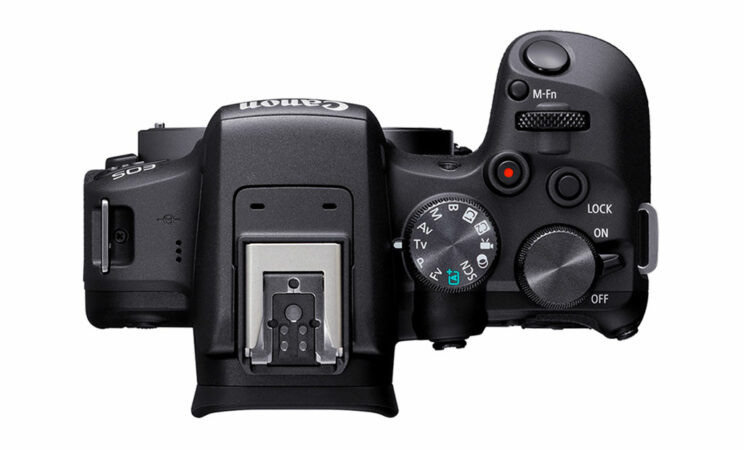
The R10 has more buttons and dials, an AF joystick, and it offers more customisation.
The R50 is intended to be used in automatic mode mainly, with its users relying more on the touch screen interface. If you want to work in manual mode, you have only one dial to control the exposure settings (aperture, shutter speed, ISO), so you have to press an additional button to cycle between the three parameters.
The R50 is available in two colours, white or black, whereas the R10 is only available in black.
2. Video
The R50 can record 4K up to 30 frames per second (30p). It does this by oversampling a 6K area on the sensor, without any crop, and what that means in layman’s term is that it offers the best quality possible, which is a good thing.
The R10 does the same, but also has the option to record 4K in 50 and 60p, so with a faster frame rate. The downside however, is that it does it with a substantial crop on the sensor, which means the field of view of your lens will change significantly.

In Full HD (1080p), both cameras record up to 60p, or 120p with the High Frame Rate mode, which is the setting you want to create nice slow motion video in-camera.
The R10 should be able to record continously for a longer time. Canon says it should hold 50 minutes in 4K 30p at the maximum quality, whereas the R50 could stop 5 / 10 minutes earlier. Note that these paramters can change depending on the room temperature in your shooting location.
Finally, both cameras can record 10-bit 4:2:2 video internally with the HDR PQ profile. There is no Canon Log however.
3. Webcam Mode
The R50 can work as a webcam by simply connecting the camera to your computer with a USB cable. Its UVC/UAC protocol will be recognised straight away, so you can chat via Zoom or stream on your YouTube channel without the need for additional softwares.
The R10 can also be used as a streaming device, but you need to install the Canon EOS Webcam Utility software to do so. The camera won’t be recognised straight away.
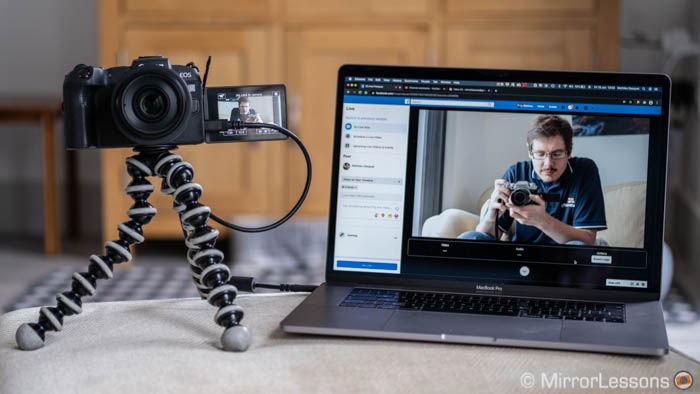
4. Advanced Automatic Modes
The R50 aims at beginners stepping up from their smartphone. Although the camera can be used in manual mode, Canon has added a number of Intelligent modes to help those who don’t feel confident setting everything up by themselves.
Many of these auto modes are also found on the R10, but the R50 has a new one called Advanced A+. Much like a smartphone, this new mode uses computational photography: it captures a set of images in rapid succession and merges them together to improve dynamic range, increase the depth of field for close-up shots, or reduce the amount of noise in a low light situation. The camera will automatically detect the type of scene and apply appropriate settings. Note that Advanced A+ only works with JPGs, not RAW, unlike the other modes.
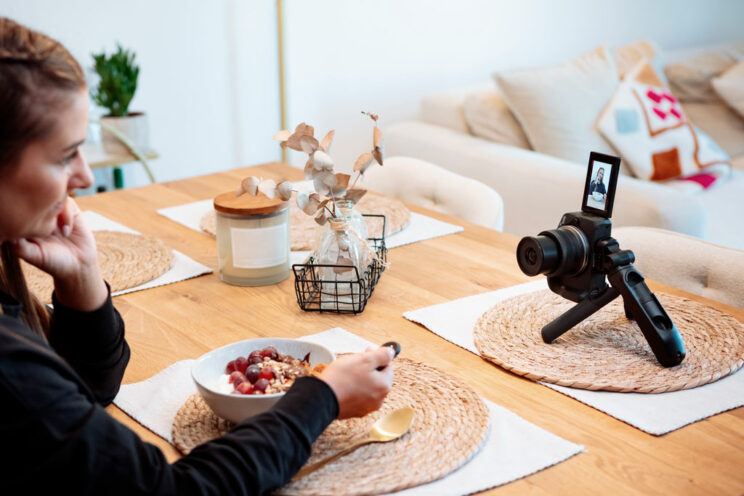
Another feature found on the R50, designed for video content creators, automatically switch focus to an object when it is moved close to the lens. This is useful when showcasing a product for example, and you want your audience to take a closer-look by moving the product close to the camera, in the foreground. Once you move the product back, the camera will revert focus to the face of the person talking. This is similar to the feature found in Sony’s recent entry level mirrorless cameras.
5. Shutter
One thing to understand is that the R50 doesn’t have a full mechanical shutter, but only the electronic-first curtain shutter, in addition to the electronic shutter.
That is not a big deal in most situations, but be aware that in some cases the bokeh rendering (out of focus background) can be less pleasant if you use a fast shutter speed (higher than 1/500s in general).
6. Drive
The R50 can shoot up to 12fps, and the speed increases to 15fps if you use the electronic shutter.
The R10 is faster: 15fps with the mechanical shutter, 23fps with the electronic shutter.

As for the buffer (aka how long the camera can shoot at full speed before stopping or slowing down), the R10 is clearly superior as you can see below.
Buffer
R50
R10
12 fps
42 JPG
7 RAW
–
15 fps
28 JPG
7 RAW
460 JPG
29 RAW
23 fps
–
70 JPG
21 RAW
7. LCD Screen
Both cameras feature a multi-angle LCD monitor, that can be easily opened on the side and rotated 180˚ to film yourself, as well as adjusted in many angles depending on your needs.
Both monitors offer touch sensitivity, and the R50 in particular is the camera designed to be used via the screen more than with the buttons.
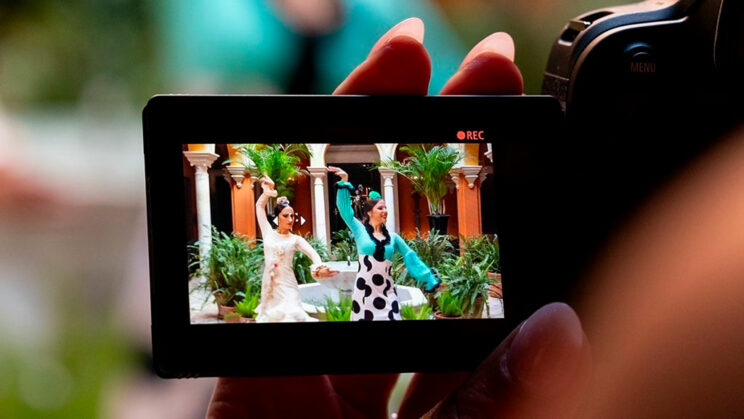
The only technical difference here is the resolution: surprisingly, the less expensive camera has more: 1.62M dots for the R50, 1.04M dots for the R10.
8. SD Card
Both cameras accept one SD card only, but the R10 can use the faster UHS-II type, whereas the R50 feels a bit old already by only accepting the UHS-I protocol.
In most cases, this won’t matter to R50 users, but being able to use a faster card could have helped clear the buffer more quickly for example.
9. Battery life
Each camera is shipped with the LP-E17 battery, which is small and won’t give you extraordinary performance.
That said, the R10 seems to be a bit more power hungry: it can capture approximately 430 images when using the LCD, or 260 when using the viewfinder.
The R50 does a bit better: 440 shots with LCD, 310 shots with the EVF.
10. Price
As always, the 10th point is the most important one. The R50 is less expensive, and starts at $680 / £790 / €830 for the body only.
The R10 can be found for $880, £800 or €950. Note that the EOS R to EF adapter is often included in the box.
For each, add about 100 bucks for the RF-S 18-45mm kit lens.
Note: prices as of February 2023.
Conclusion
There isn’t a lot to say here, other than the R50 is the camera designed for absolute beginners, whereas the R10 offers more controls and some extra features. They share the same sensor, the same image quality, the same video quality and equal autofocus performance.
Unless you want something that is as compact as possible, I think the R10 is the better deal and worth the extra monety. Even if you put everything on Auto at the beginning, you’ll find a more pleasant camera to use once you start to transition to manual controls. In some countries like the UK, the difference in price is minimal, so I would definitely discard the R50.
Reminder: the links below are affiliate links. If you decided to buy something after clicking the link, we will receive a small commission.
Check price of the Canon R50 on
B&H Photo
